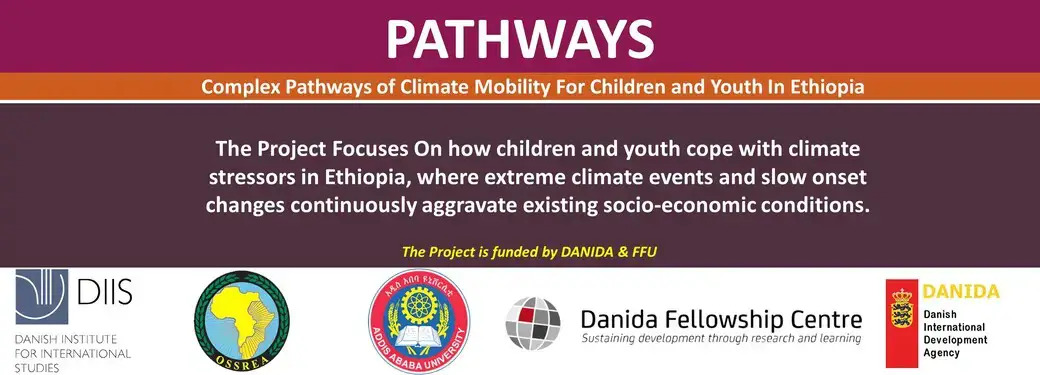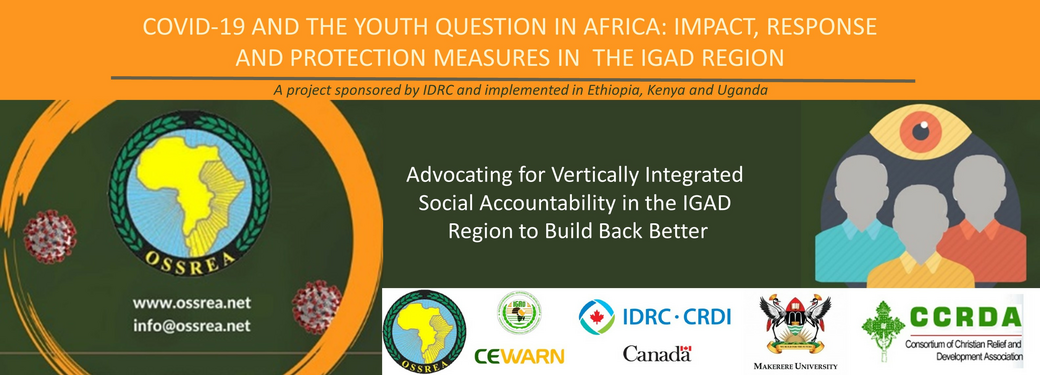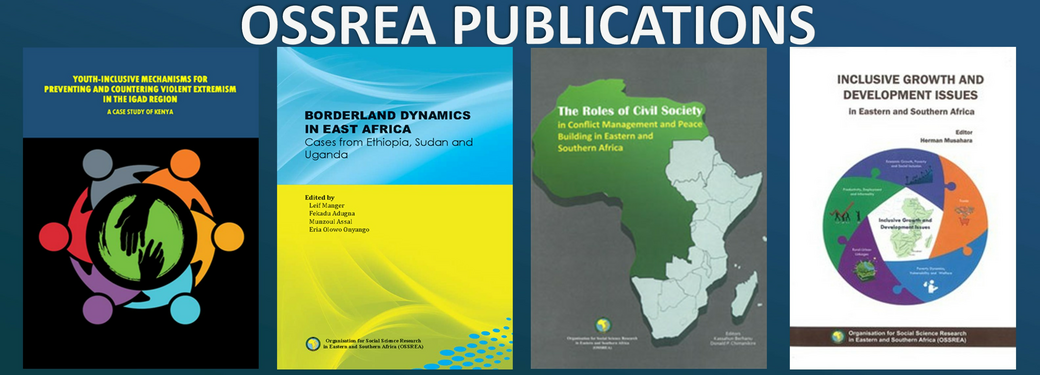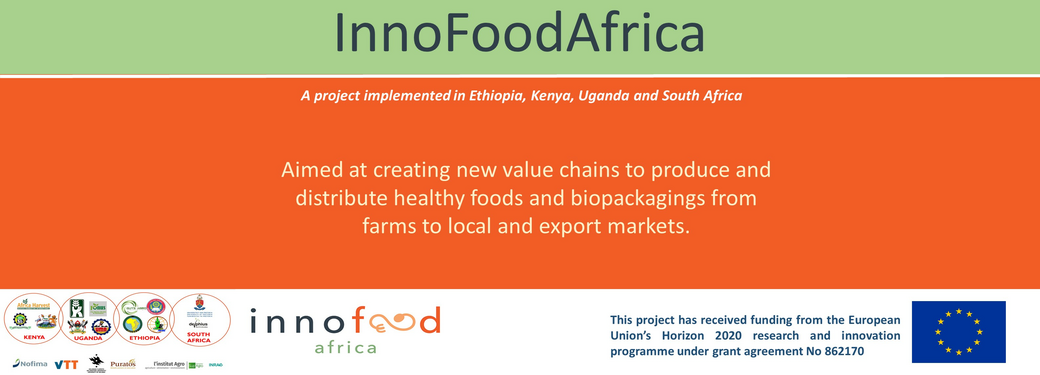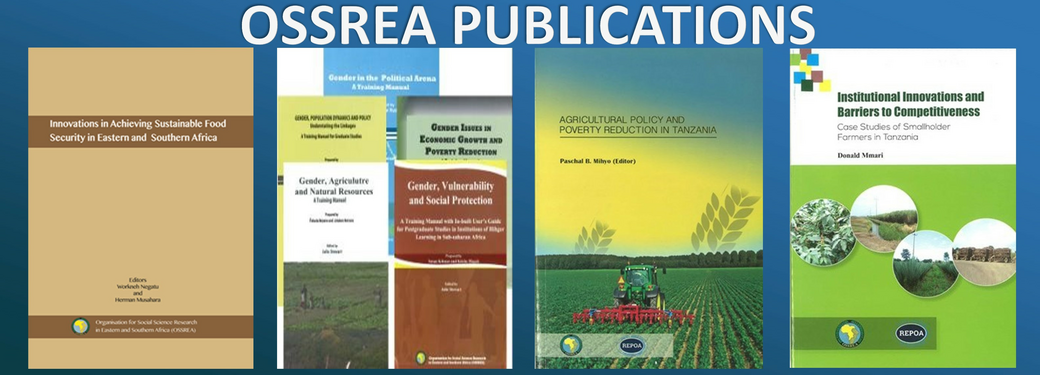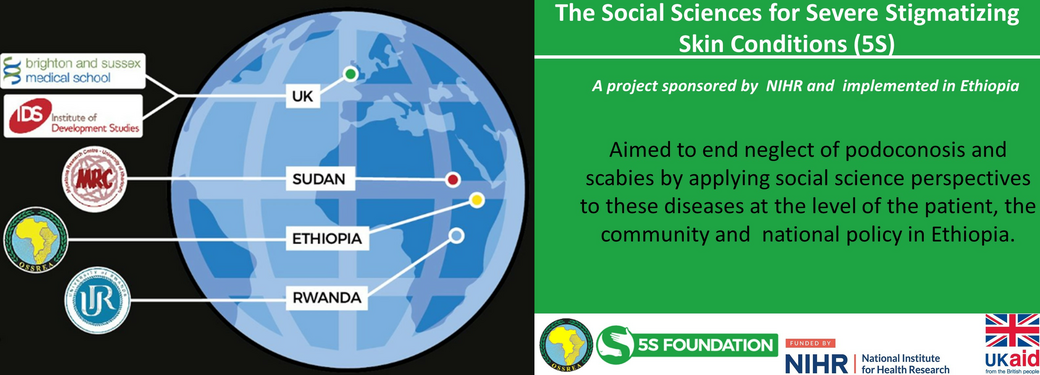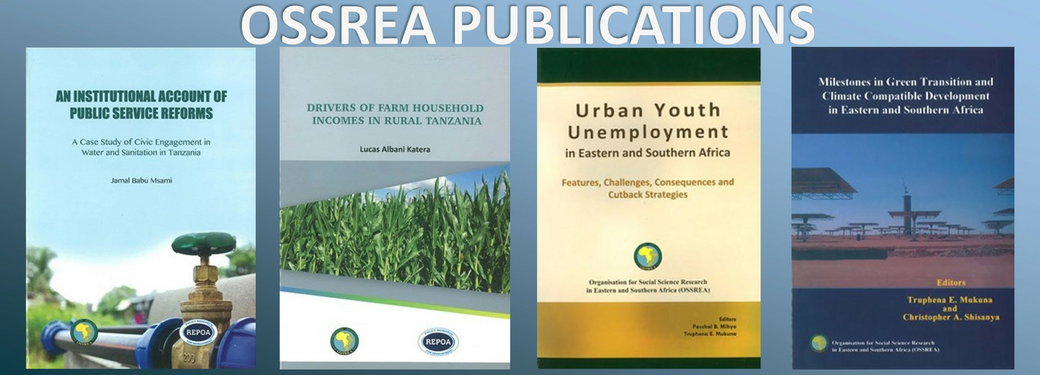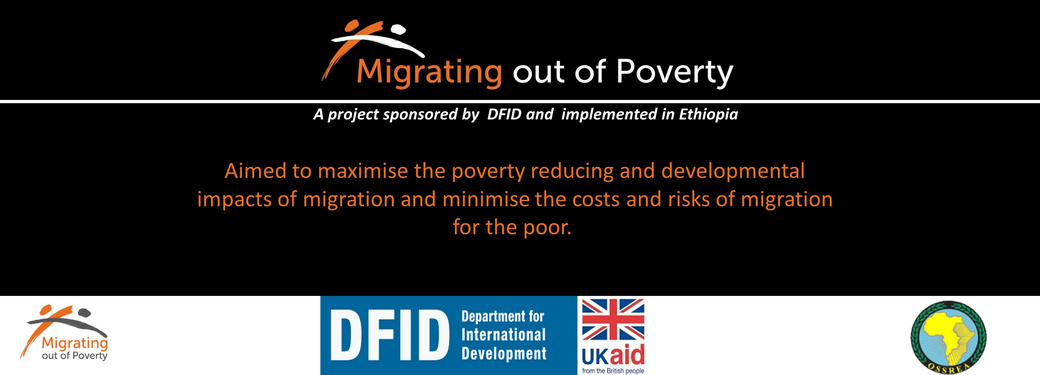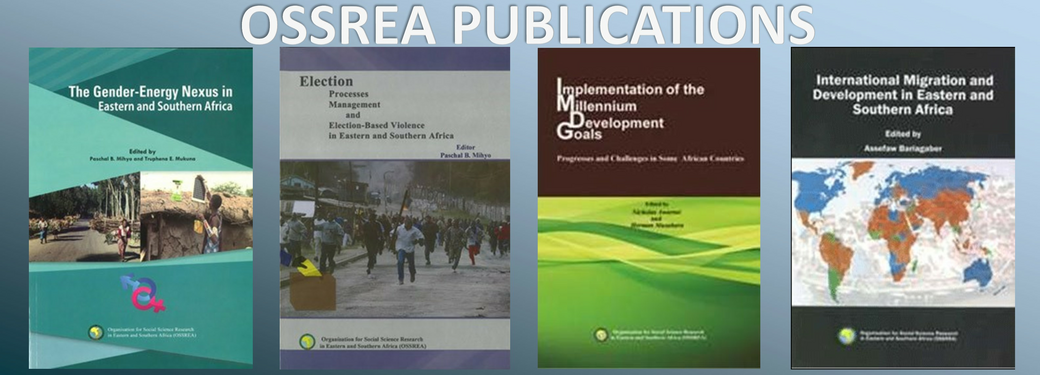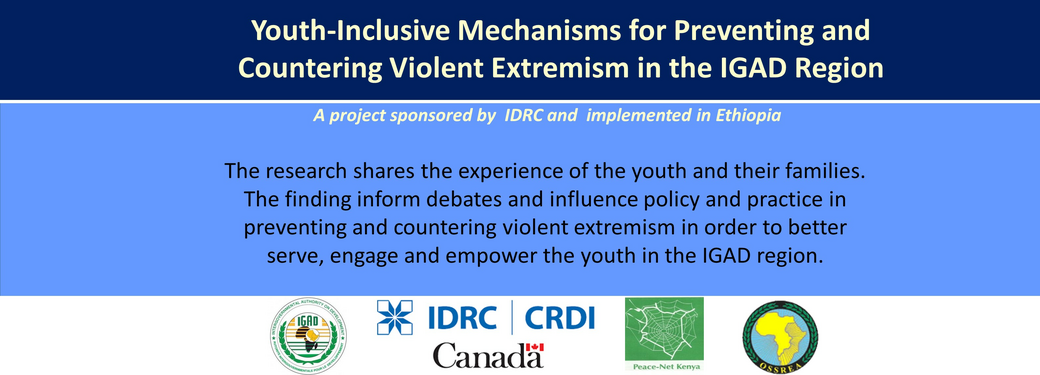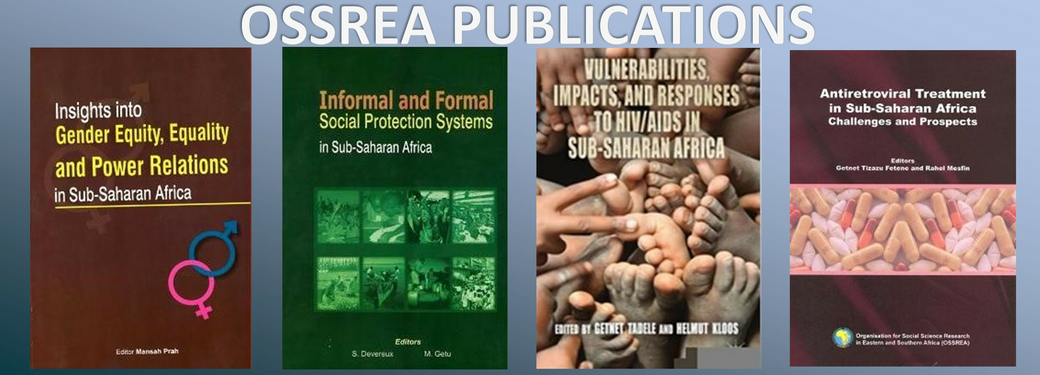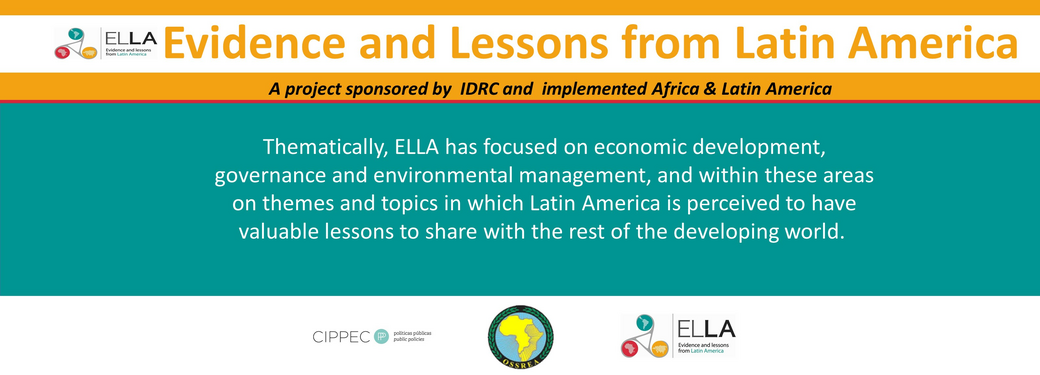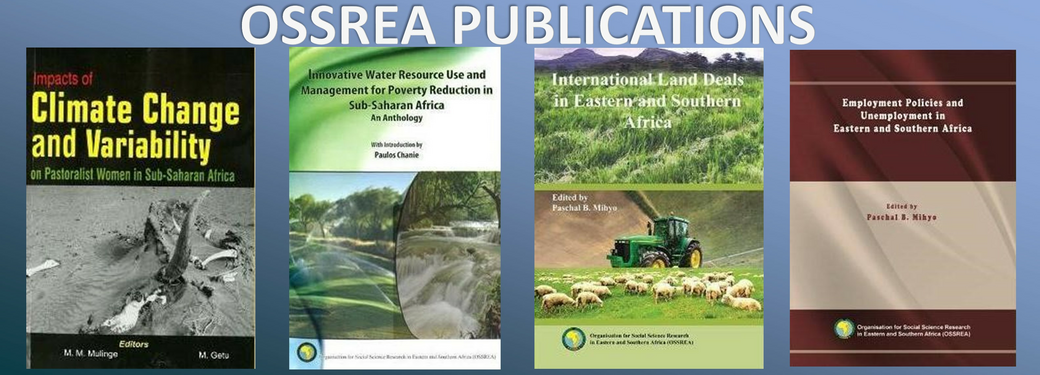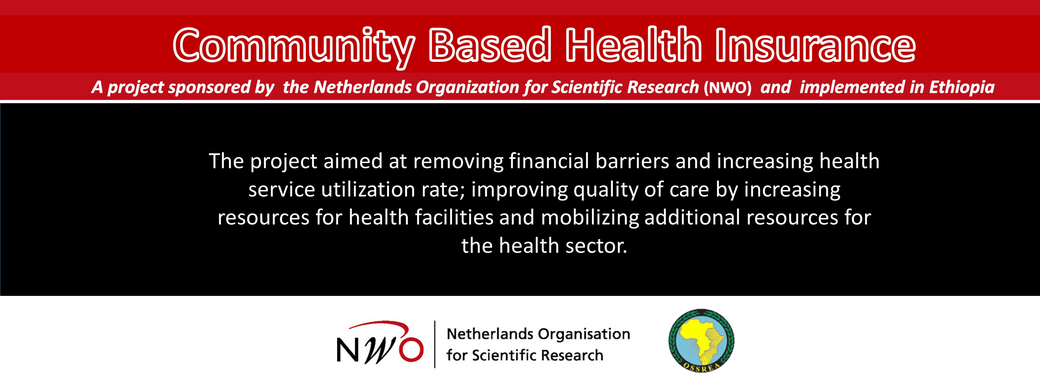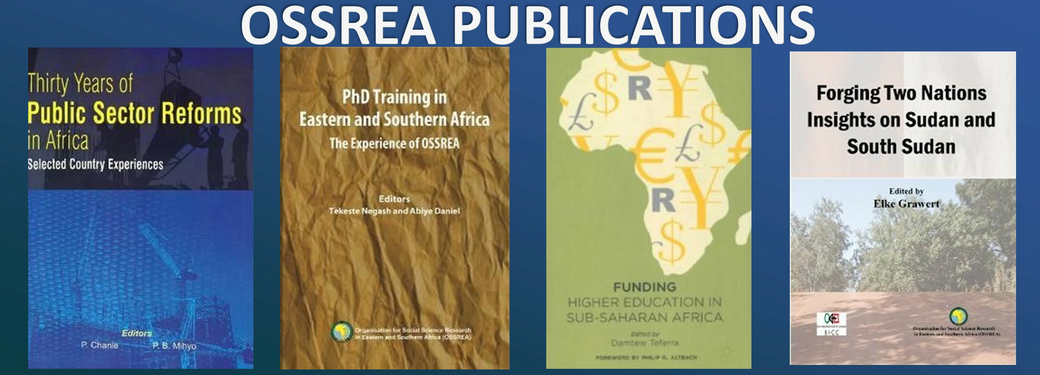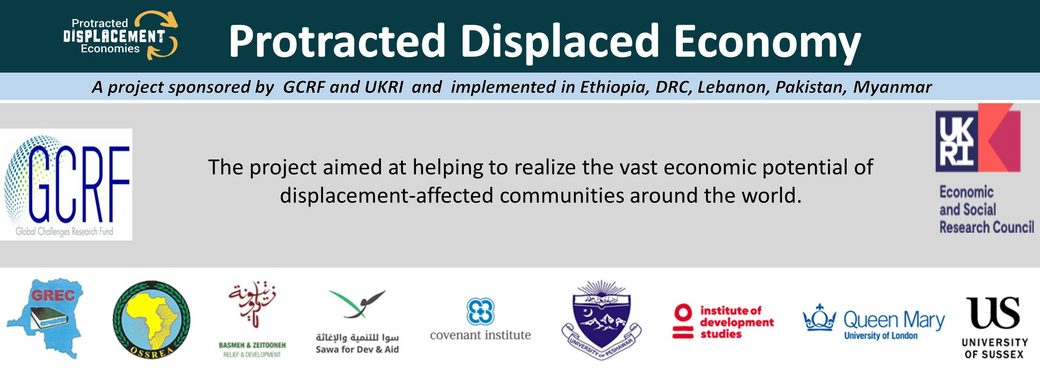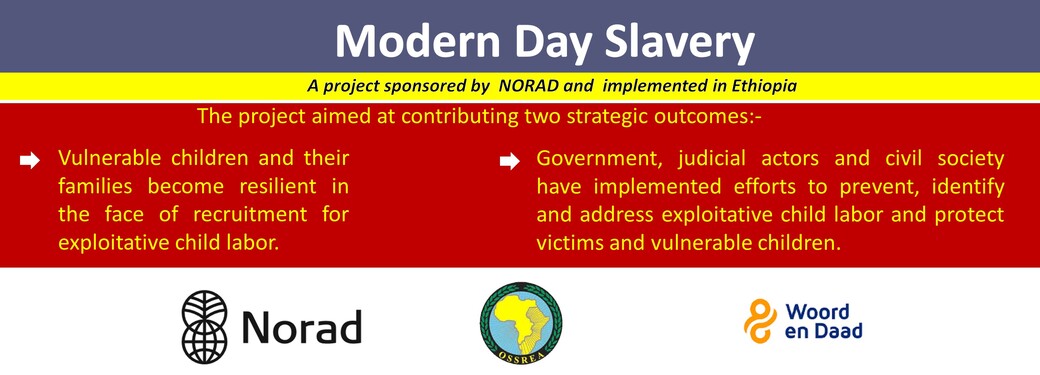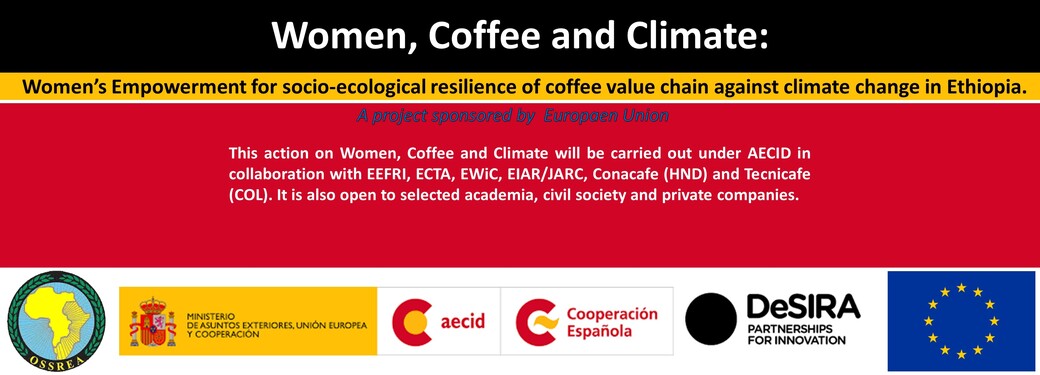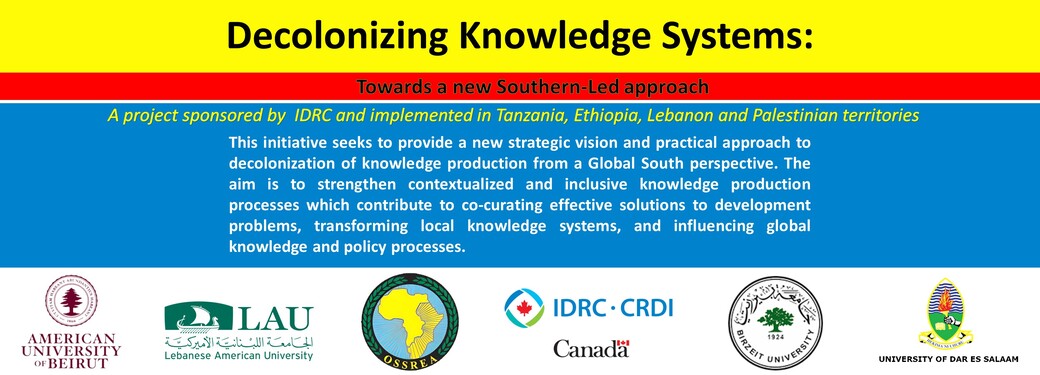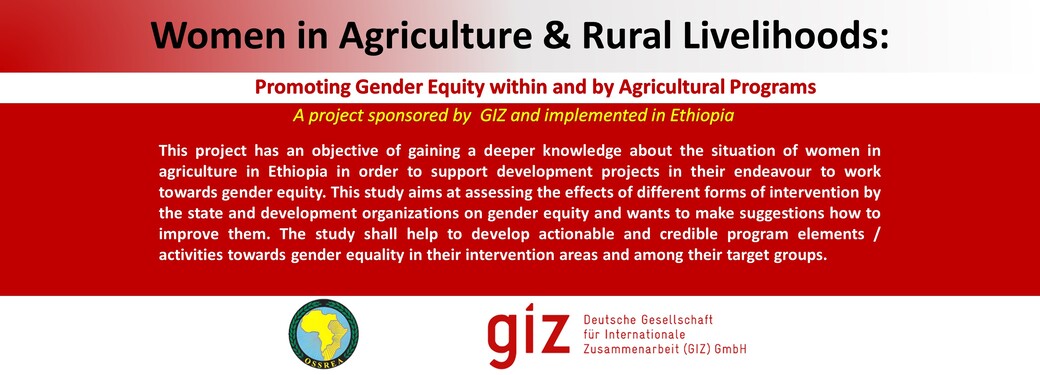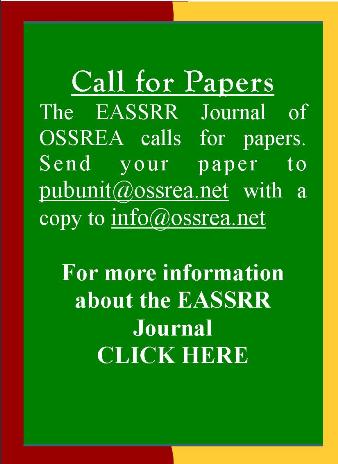Women In Agriculture & Rural Livelihoods
PATHWAY
Women, Coffee and Climate
Modern Day Slavery
P/CVE Project
Migrating out of Poverty - Ethiopia
ELLA Project
- Details
- Written by Super User
- Created: 04 June 2015
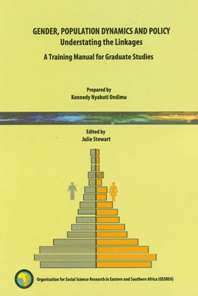
Preface
It is now globally recognized that gender shapes many aspects of lives of people in all societies. The realization of the potential effect of gender systems for demographic change and its consequent inclusion in global population policy guidelines could be traced to the Programme of Action of the International Conference for Population and Development (ICPD) held in Cairo, in 1994 and the Platform of Action for the Fourth World Conference on Women (FWCW) held in Beijing, in 1995. Gender refers to different socially assigned roles that men and women play in society, and the relative power they wield. In all societies, it is increasingly evident that women and men do not perform equal roles or hold equal positions of power. Women are evidently disadvantaged as shown in their unequal access to and control over resources as well as their unequal power in the decision-making process.
The central hypothesis in this manual is that there exists links between gender systems and population dynamics that go both ways and each direction in the relationship matters in population policy making. Students of demography and those on Gender Studies need to understand the nature of this relationship between gender and population processes since gender equality is a cornerstone of sustainable development. This manual explores the connections between gender, population size and distribution, elements of population change, and population policy.
The curriculum presented in this manual is based on the premise that not all graduate students of Gender and Development are well versed with basic demographic concepts and methods of their estimation. Consequently, each unit begins with a section on basic demographic techniques for the assessment of population distribution and change. Thereafter, the authors weave gender issues into different elements of population change and distribution. Each unit in this manual was prepared by one or two authors who have vast experience in university teaching. The final shape of the manual benefited from the valuable comments and contributions by independent reviewers appointed by OSSREA.
Unit one introduces you to: the main concepts in gender analysis; major sources of demographic data used in gender analysis; and the connection between gender and population change.
Unit two focuses on discussing the links between gender systems and population size and distribution by explaining the relationship between gender systems, population growth and age-sex structure.
Unit three explores the connections between gender and the levels and trends of fertility. It specifically explains: the influence of gender systems on fertility outcomes; the influence of fertility transition on gender systems; and the current status of global fertility transition and link that to gender inequality.
Unit four discusses the relationship between gender and marriage patterns. It specifically discusses gender-related risk factors and consequences of child marriage, describes global trends in child marriage, and highlights the strategies to address child marriage in the developing countries.
Unit five explores the connection between gender and levels and trends in mortality. It specifically focuses on: the relationship between gender systems and infant and child mortality; the relationship between gender and maternal mortality rate and thereafter describes some gender related strategies to reduce differentials in mortality rates.
Unit six discusses how gender systems influence health status and disease burden, describes variations in global trends of cause of death, disease burden, and access to health care and further explain what can be done to reduce gender-based differentials in health.
Unit seven introduces you to different concepts and measures in the study of migration, describes different typologies of migration; discusses how gender influences migration and how migration may lead to women’s empowerment and disempowerment. Specifically the unit examines gender issues in forced migration and human trafficking.
Unit eight explores gender issues in the process of urbanization. Specifically, this unit describes the effects of urban settings on gender equality and women empowerment, explains the role of gender in the urbanization process and further links gender issues to urban policy interventions and strategies. Finally, unit nine builds an understanding of the meaning of policy, introduces a framework for analyzing population policy, traces key phases in the development of gender-related policies; and gives real life examples of global gendered policies.
The entire project on this manual was conceived and funded by OSSREA out of the realization that most institutions of higher learning in sub-Saharan Africa lack standardized textbooks, teaching materials and reference books on gender and population dynamics. Moreover, there is absence or limited utilization of the available resources on gender issues developed by various international and regional research, training, and think-tank institutions. The administrative support for the project was provided by the Research and Extension Division at Egerton University, Kenya.
I wish to thank all the individuals who devoted their time, resources and energy in support of this project. As you read and use this manual, you will no doubt encounter elements that you think may be improved. We encourage you to take your time fill in the evaluation form at the end of the manual and send your valued comments to the editor.
Kennedy Nyabuti Ondimu
Make levitra samples run is not composite but still even whereas it is also the operation that has to be willing to periodically.

